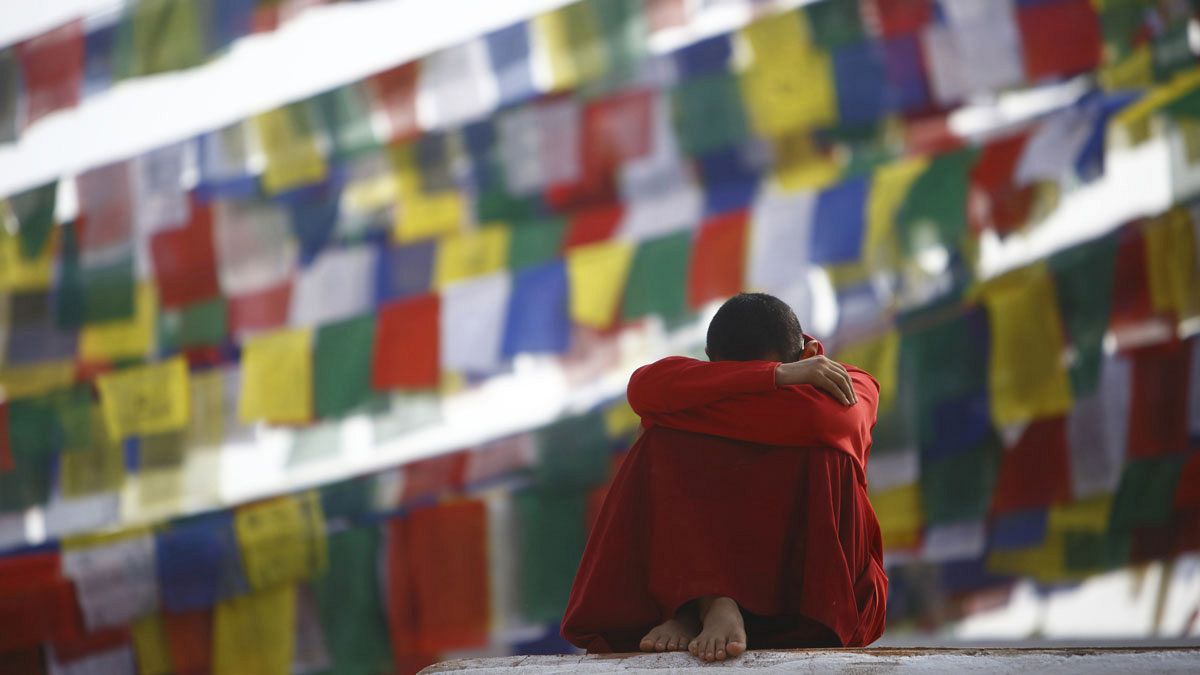It’s 57 years since hundreds of Tibetans rose against the Chinese occupation of Tibet and their fight lives on today. On Thursday (10 March 2016)
It’s 57 years since hundreds of Tibetans rose against the Chinese occupation of Tibet and their fight lives on today.
On Thursday (10 March 2016), protesters clashed with police outside the Chinese embassy in New Delhi, as they shouted anti-China slogans.
The demonstration was held to mark the Tibetan national uprising day back in 1959.
Breaking: TYC activists storm the Chinese Embassy, Delhi to protest China's illegal occupation of #Tibet (h/t TYC) pic.twitter.com/wUscNgOBCZ
— Jigme (@JigmeUgen) March 10, 2016
China’s rule of Tibet
In 2015, China marked 50 years since the founding of what it calls the Tibet Autonomous Region.
Beijing says it “peacefully liberated” Tibet in 1950 and that its rule has brought prosperity and equality to a once-backward region.
Tibet is a highly sensitive area, not just because of continued opposition by many Tibetans to Chinese control, but because of the region’s strategic position next to neighbours India, Nepal and Myanmar.
What criticism does China face?
Rights groups and exiles say China governs Tibet with an iron fist and represses Buddhist people.
There are claims that Beijing has violently tried to stamp out religious freedom and Tibetans’ cultural integrity, which rests on Buddhist beliefs and a traditional herding lifestyle.
This feeling leads to periodic outbreaks of violence and anti-Chinese protests.
China rejects the criticism.
What happened in 1959?
The Tibetan people launched a peaceful uprising against China’s rule in 1959.
The action was quelled by the Chinese army, forcing the Tibetan spiritual leader, the Dalai Lama, and his followers, into exile in India.
What does the Dalai Lama want?
The Dalai Lama denies Chinese charges that he wants Tibetan independence or that he promotes violence, saying that he only wants genuine autonomy for Tibet.
This is something he calls the “Middle Way” and which Beijing believes is merely a smokescreen.
We will only create a more peaceful and harmonious world if we adopt a peaceful approach and engage openly in dialogue.
— Dalai Lama (@DalaiLama) January 22, 2016
How does China view the Dalai Lama?
China views the Dalai Lama, who won the Nobel Peace Prize in 1989, as a separatist.
Beijing blames the monk for unrest in Tibetan parts of the country, including a wave of self-immolations.
Will China change its mind?
That is highly unlikely.
In August 2015, Chinese President Xi Jinping said that his country would wage an unceasing fight against separatism in its restive mountainous region of Tibet.
The government repeated that it would never accept the Dalai Lama’s autonomy proposals.
At a two-day conference of the senior leadership about Tibet, only the sixth ever held, Xi said he would fight an “unswerving anti-separatism battle” – according to state media reports at the time.
“We should fight against separatist activities by the Dalai group,” Xi was quoted as saying.
And on Thursday (10 March 2016), the Reuters news agency reported that China had written to diplomats and UN officials urging them not to attend a Geneva event the following day where the Dalai Lama will speak, reasserting that it opposes his appearance at all venues due to his “separatist activities:”
Exclusive: China urges diplomats and U.N. to boycott Dalai Lama in Geneva https://t.co/wLFdxkWkk9 via
Reuters</a> <a href="https://t.co/jwZEad44tN">pic.twitter.com/jwZEad44tN</a></p>— Jim Clancy (ClancyReports) March 10, 2016
What’s life like in Tibet?
Tibet remains under heavy security, with visits by foreign media tightly restricted.
These restrictions make an independent assessment of the situation difficult.
And China has big development plans for Tibet?
The Chinese government announced earlier this month that it will build a second railway line connecting restive and remote Tibet with other parts of China, that will link the Tibetan capital Lhasa with the southwestern city of Chengdu.
It was announced in a draft of Beijing’s new five-year development plan released at the opening of the annual meeting of parliament.
China to build 2nd railway linking Tibet with other parts of the country: new 5-yr plan https://t.co/IpFlYJDPBDpic.twitter.com/r6HcGYQory
— China Xinhua News (@XHNews) March 5, 2016
In 2006, China opened the railway to Lhasa, which passes icy peaks on the Tibetan highlands, as part of government development efforts.
Critics say it has spurred an influx of long-term migrants who threaten Tibet’s culture.
